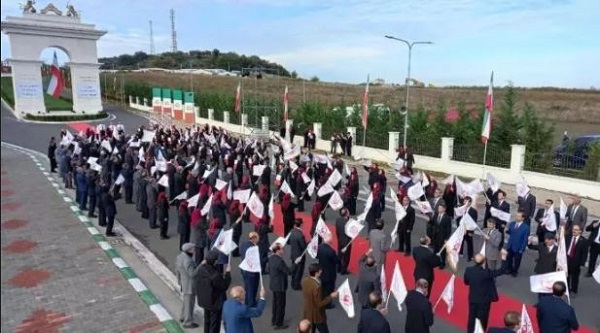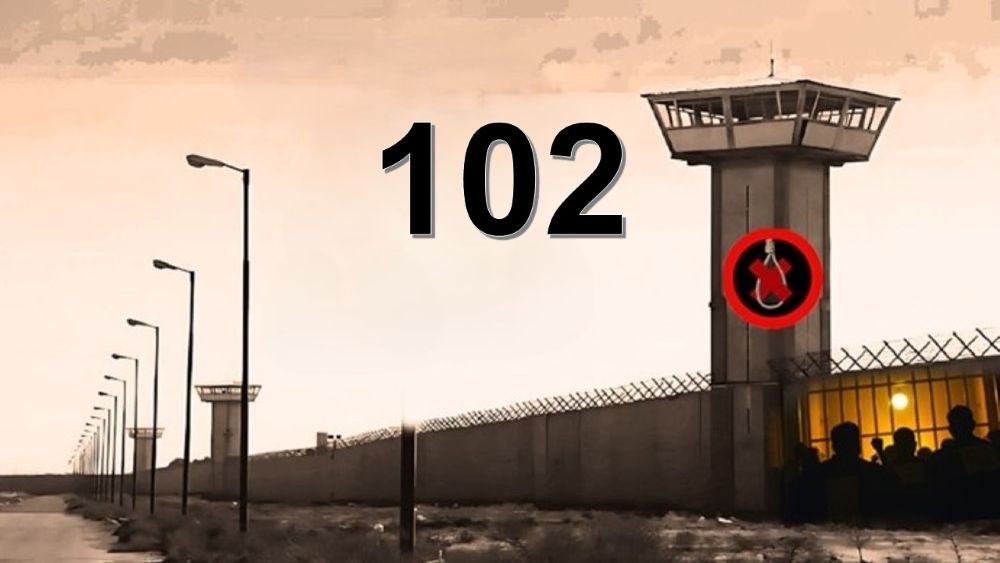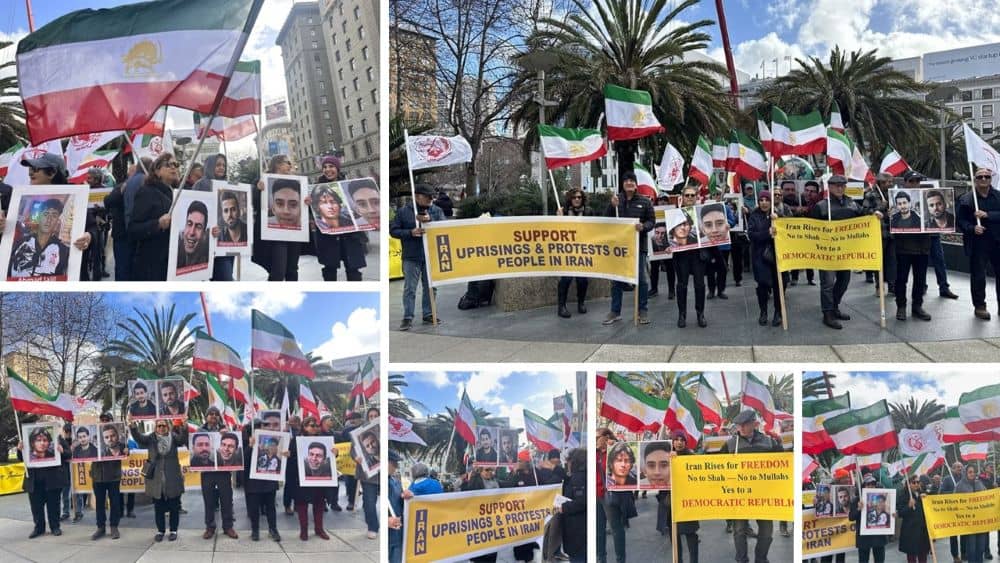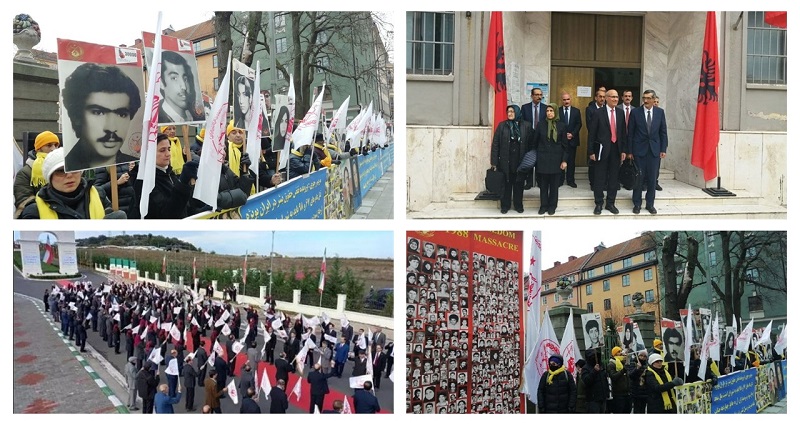
Coinciding With the 38th Court Hearing in Albania, Freedom-Loving Iranians, Supporters of the MEK in Sweden, Staged a Rally in Front of Stockholm Court
Monday, November 15, 2021 — The fourth session of the trial of the executioner Hamid Noury, began in the city of Durrës, Albania, with the presence of the plaintiffs and witnesses, members of the People’s Mojahedin Organization of Iran (PMOI/MEK), residents of Ashraf 3.
On Monday, November 15, 2021, coinciding with the anniversary of the bloody November 2019 uprising, the trial of the executioner Hamid Noury held for the fourth consecutive session in Durrës, Albania. In this session, MEK member Akbar Samadi testified as a plaintiff against Noury.
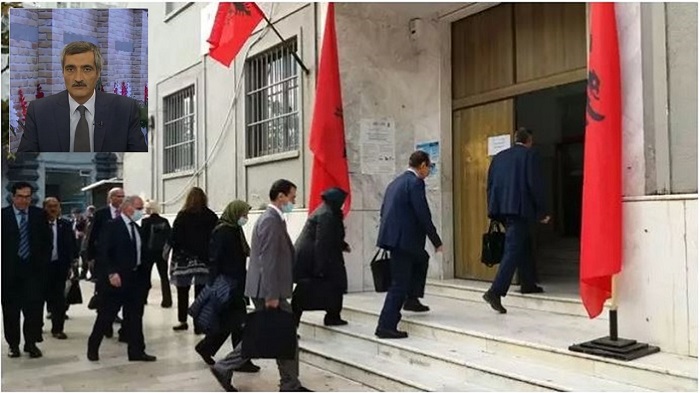
The trial of Hamid Noury, one of the executioners of the 1988 massacre, took place in three days 10-12 November of the last week, and it continues this week on Monday through Thursday, November 15-18, 2021, in Durrës Court, Albania.
This was the 38th trial session of the henchman Hamid Noury one of the executioners of 30,000 political prisoners in the 1988 massacre in Iran’s regime prisons across the country.
Last week, the MEK members and former political prisoners Mohammad Zand, Majid Sahib Jam and Asghar Mehdizadeh appeared in court as plaintiffs and testified about the 1988 massacre of political prisoners in Gohardasht Prison and the role of the executioner Hamid Noury in the massacre.
The trial began at 8 a.m. local time. MEK member Akbar Samadi’s lawyer first introduced him.
The prosecutor’s question and answer session then began with Akbar Samadi, and the prosecutor asked Akbar to state his observations of what questioned.
Regarding his arrest, Akbar Samadi said that he was arrested in 1981when he was only 14 years old, but before that he had been arrested three times in 1980.
He was sentenced to 10 years in prison for supporting the Mojahedin. Akbar Samadi said that he was transferred to Gohardasht Prison in May 1986.
On July 30, 1988, around the time the 1988 massacre of political prisoners started, Samadi was in the upper floor of Gohardasht’s Ward 2. The prison guards transferred Samadi and several other prisoners out of the ward and to what later became known as the “Death Corridor.”
Prisoners waited until their turn before the Death Commission, a group tasked with deciding which prisoners would live or be executed. Members of the commission included current regime president Ebrahim Raisi and former justice minister Mostafa Pourmohammadi.
The Death Commission was acting on the direct orders of regime supreme leader Ruhollah Khomeini, who had issued a fatwa that stated anyone who continues to support the Iran opposition MEK is an enemy of God and deserves to die.
“All that we heard indicated changes and certain developments in the making. A number of the prisoners had seen Davoud Lashgari and a number of prison guards in the ward’s TV room. They had a wheelbarrow with ropes (nooses),” Samadi said.
In the Death Corridor, Samadi was placed next to a prisoner who had lost his mental stability due to the severe torture. “He wasn’t the only one to have such conditions,” Samadi said, adding he had seen at least four other prisoners who had lost their sanity under torture.
While in the Death Corridor, Samadi heard from one of the prisoners that the executions had also started in Evin prison. “Tell the others that they are executing everyone,” he said.
While in the Death Corridor, Samadi protested to Nasserian, asking why were they being kept in the corridor.
“Be thankful that you’re still breathing. I will personally throw the noose around your neck,” Nasserian told Samadi.
In the Death Corridor, Hamid Noury led prisoners to the Death Commission & the Death Hall.
“I was there until late at night. Almost everyone was taken to the Death Hall,” Samadi said. “[Noury] read out 14 names… My name wasn’t on it.”
Samadi was taken to incommunicado.
Lashgari took Samadi to the Death Commission. After being asked the same questions, he was sent back.
“I witnessed several times Hamid Noury reading out names of prisoners who were to be executed,” Samadi said. “He read names of prisoners & took them to the end of the corridor.”
At the time, Iran’s regime sought to force prisoners into televised interview against the MEK. “As [Nasserian] spoke, I realized this is one of the conditions for execution. My [indirect refusal] angered him. He and Hamid Abbasi wrote down my name.”
Samadi:
“They lined us up. I squeezed the shoulder of the prisoner who was in front of me as a sign of farewell… We moved and turned toward the Death Corridor that led to the Death Hall. We thought we were being taken for execution.”
In the Death Corridor, Hamid Noury led prisoners to the Death Commission & the Death Hall.
— People's Mojahedin Organization of Iran (PMOI/MEK) (@Mojahedineng) November 15, 2021
“I was there until late at night. Almost everyone was taken to the Death Hall,” Samadi said. "[Noury] read out 14 names… My name wasn’t on it.”
Samadi was taken to incommunicado.#Iran pic.twitter.com/r0370EN1m8
Samadi:
“I would clearly see Hamid Abbasi when he was busy reading out names & lining the prisoners up. I have no doubt it was him. On August 3 I saw Hamid Abbasi several times as he was reading out names and those prisoners were taken to the Death Hall.”
Samadi:
“I was just a few meters away from him. Hamid Abbasi was also busy in the Death Hall. His main task was to read out names and take prisoners to the Death Hall.”
Samadi:
“On August 6, I saw them bring Nasser Mansouri.”
Mansouri was paralyzed from the neck down.
“When they brought him to the Death Corridor, I was shocked… I thought they had brought him for administrative procedures, but they took him to the Death Hall.”
In February, Samadi was transferred to Evin prison. There, he saw Moghiseh and Noury.
“Although I didn’t show myself to them, Noury saw me and said, ‘You slipped through our fingers. You should have been executed,’” Samadi said.
Samadi explained that all prison personnel were forced to participate in the executions.
“[Noury] read out a list of prisoners & led them into the Death Hall… It is worth noting that on August 6, Nasserian told Davoud Lashgari, ‘Call everyone. We want to start,'” Samadi said.
Samadi:
“The technical staff, clinic personnel, store managers, all of them went to the Death Hall. Even the members of the Death Commission went to the Death Hall and they all participated in the executions, including Nayyeri, the store manager, and the sentries.”
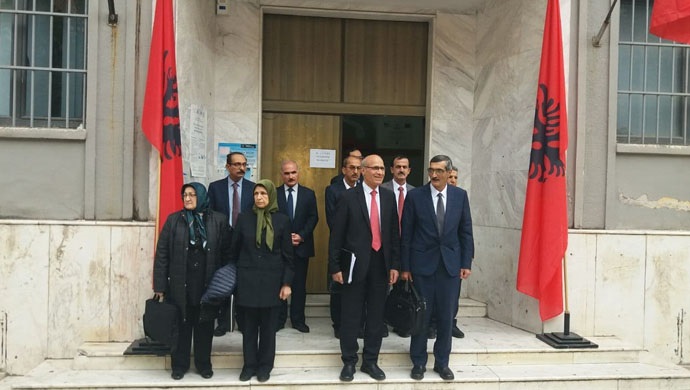
…
Stockholm, Sweden, November, 15, 2021— Coinciding with the 38th court hearing in Albania, freedom-Loving Iranians, supporters of the People’s Mojahedin Organization of Iran (PMOI/MEK) gathered in Front of Stockholm district court.

Supporters of the Iranian resistance declared their solidarity with the martyrs of the November 2019 nationwide uprising. They also stressed to continue of seeking Justice for the martyrs of the 1988 massacre and their families.
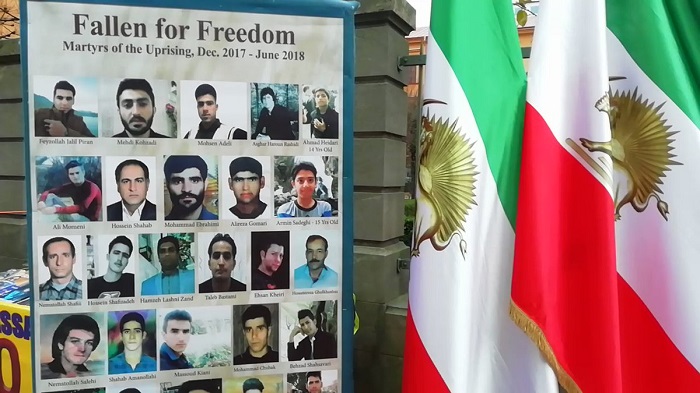
Iranians, MEK supporters and relatives of the 1988 massacre martyrs called for the prosecution of the mullahs’ regime leader supreme leader, Ali Khamenei, and the mass murderer Ebrahim Raisi, the executioner of the 1988 massacre, in international courts for crimes against humanity.
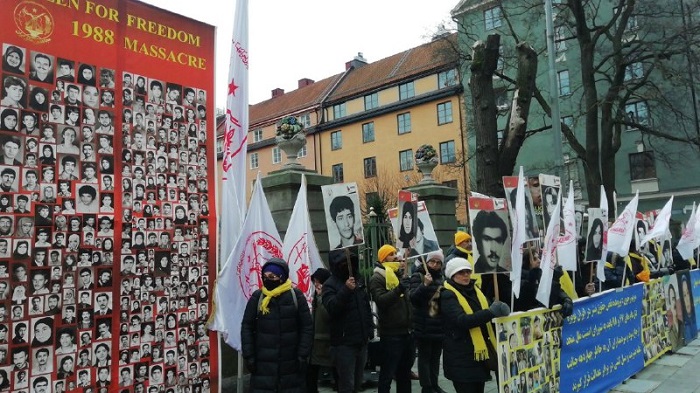
…
At the same time, MEK members in Ashraf 3 held a gathering in memory of the victims of the 1988 massacre and Iran’s 2019 uprising.
During this ceremony, many political prisoners spoke and retold accounts of the atrocities that took place in Iran’s prisons. It is worth noting that hundreds of former political prisoners are now in Ashraf 3, and many of them were prepared to testify in the Stockholm court. Due to limitations in time, only a few were accepted as plaintiffs in the case.
